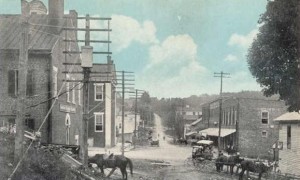The First Baptist Church of Dandridge, Tennessee, a notable congregation within the state, struggles to navigate the war years.
Founded in 1786 (seven years prior to the formation of the town of Dandridge, named after Martha Dandridge Washington, wife of George Washington), the Jefferson County congregation is no stranger to difficult times. In July 1845, as the slavery and anti-slavery rhetoric had been in full force in the nation’s capital and only months after Baptists of the South formed the Southern Baptist Convention to preserve African slavery, the Dandridge congregation had voted to prohibit political speeches in their meeting house.
The congregation maintains an active role in regards to matters of ethnicity. African slave members receive burials at the church’s expense, while the congregation, following the formation of the SBC, reflects the pro-slavery positions of the denomination. In 1848, the congregation votes to form an African Sunday School for the purpose of teaching slaves to read the Bible. The African Sunday School continues into the 1850s, but is discontinued in the face of growing Southern white hostility towards educating African slaves. Many whites fear that if slaves learn to read the Bible, biblical passages of freedom will make them question their status as chattel.
The town and church were both formed by Scotch-Irish immigrants, and in March 1847 a church committee calls a meeting with town officials to seek measures for helping alleviate the starvation in Ireland. (In the 21st century, the town hosts an annual Scots-Irish Music Festival.) In the years following and prior to the Civil War, the congregation is involved heavily in supporting Southern Baptist foreign mission work.
The congregation also plays a role in Baptist higher education, as Carson-Newman College traces its beginnings to a meeting held in the Dandridge meeting house on April 13, 1849. Two years later, Dandridge pastor William Rogers becomes Carson-Newman’s first president.
And then comes the war.
Within a state divided by Union and Confederate loyalties, Dandridge, as many Tennessee communities, becomes contested territory. As the town faces difficult times, so does the Baptist church. Today, the church calls a new pastor, William Carson (from a prominent church family after whom Carson-Newman is named), hoping that he will help the congregation through the troubled times at hand. Yet following months of hesitation, Carson ultimately declines the call.
For the remainder of the war, the Dandridge church barely keeps the doors open. On many if not most Sundays in 1863 and 1864, only the church clerk, James Harvey Carson (the future namesake of Carson-Newman College), shows up for services. Michael Cate preaches regularly from late 1863 through the remainder of the war, yet often only one or two church members attend services.
In short, the church hangs by a thread during the war, a fate shared by many other Southern Baptist congregations.
The restarting of Sunday School on May 5, 1866 signifies the first notable post-war progress in the church. Five years later, most African members leave to join a black Baptist church in town. In 1896 an indoor baptismal pool is added, following over a century of baptizing in a nearby river. In the twentieth century, modernization and involvement in denominational affairs characterizes the trajectory of the First Baptist congregation.
Sources: Doris Kinser Fountain, “History of the First Baptist Church of Dandridge, 1786-1961” (link); Isaac N. Carr, History of Carson-Newman College, 1959 (link); historical sketch of Dandridge, Tennessee (link); Battle of Dandridge, January 17, 1864 (link); Dandridge Scots-Irish Music Festival (link); First Baptist Church of Dandridge website (link); Dandridge postcard image (link)



